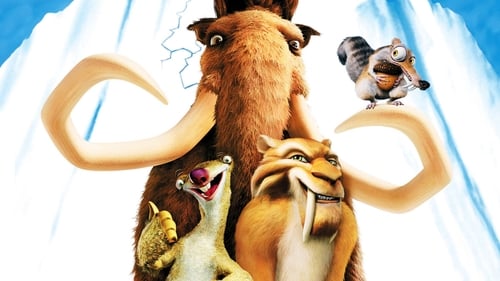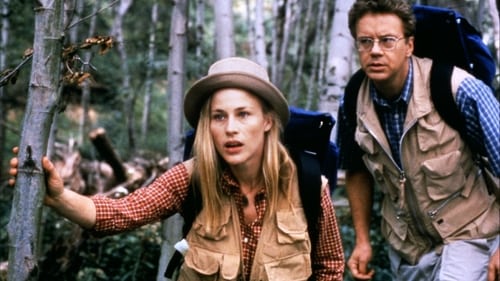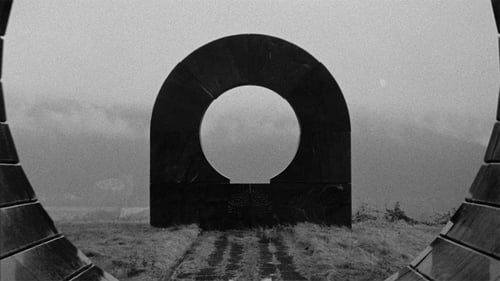Vývoj člověka I. (1953)
Género : Documental
Tiempo de ejecución : 0M
Director : Fedor Kaucký
Escritor : Fedor Kaucký, Jan Jelínek
Sinopsis

George Taylor forma parte de una tripulación de astronautas a bordo de una nave espacial -en una misión de larga duración- que se estrella en un planeta desconocido y aparentemente carente de vida inteligente. Sin embargo, pronto se da cuenta de que el lugar está gobernado por una raza de simios inteligentes que esclavizan a los seres humanos, que carecen de la facultad del habla. Cuando su líder, el doctor Zaius, descubre con horror la facultad de hablar de Taylor, decide que lo mejor es exterminarlo.

Hace muchos, muchos años, tantos como 20.000, una pequeña ardirata de nombre Scrat quería esconder una bellota en el hielo. Pero lo que hace es provocar una semicatástrofe que provoca que todos los animales migren hacia el sur, hacia tierras más cálidas. Bueno, lo que se dice todos, todos, no. Porque hay uno que lleva la contraria: se trata del mamut Manfred, un auténtico lobo solitario vagabundo y soberbio que va hacia el norte sólo porque los demás están yendo hacia el sur.

Un científico obsesivo y una naturalista descubren a un hombre que ha nacido y se ha criado en estado salvaje. Mientras el científico intenta educarlo, su amante lucha por preservar los instintos simiescos del hombre, porque según ella, representan la libertad. En medio de esta lucha por el poder, surge un insólito triángulo amoroso.

A medida que el fin se acerca inexorablemente, los últimos humanos, que viven millones de años en el futuro, envían un mensaje a la humanidad del presente, un mensaje que es a la vez una petición de ayuda y una advertencia, pero también una narración épica sobre la evolución, la decadencia y la esperanza.

Hace 40 000 años, las estepas de Eurasia eran el hogar de nuestro pariente humano más cercano, los neandertales. Recientes descubrimientos genéticos y arqueológicos han demostrado que no eran los habitantes de cuevas tontos que durante mucho tiempo pensamos que eran. De hecho, eran cultos, tecnológicamente inteligentes y más parecidos a nosotros de lo que imaginamos. Entonces, ¿por qué desaparecieron? Acompañamos a los científicos en una búsqueda emocionante de una respuesta a esta pregunta y llegamos a una conclusión sorprendente ...

Este documental es la crónica del hallazgo de algunos de los fósiles más importantes de nuestra era. Lo habitual es que los paleoantropólogos encuentren fragmentos de hueso aislados, pero allí hay miles, y por primera vez, arrojan nueva luz sobre los albores de la humanidad.

The main character is crazy about about depicting various anomalies in art. Accidentally he finds a cinematography archive which makes him advance a completely new theory on the reasons why humans became bipedal. Yufit proceeds with the plot by describing a scientist struggling against the epidemic wave of anomalies in the physical and mental world thematically started in his other films. This time the struggle takes place on the background of paleoanthropology, psychoanalysis and modern art. As materials of the Museum of Anthropology and other archives are included in the film, it oversteps the boundary between a feature film and documentary.

A feature documentary about the journey of mankind to discover our true force and who we truly are. It is a quest through science and consciousness, individual and planetary, exploring our relationships with ourselves, the world around us and the universe as a whole.

The cutting edge group known as transhumanists see a beautiful future brought about by artificial intelligence, life extension, and cybernetics. What one must realize before getting carried away with such utopian dreams is that transhumanism was born out of the elitist pseudo-science eugenics. This documentary provides vital information on the history of eugenics and its new cutting edge transformation.

Explores the story behind the discovery of an early primate fossil, Darwinius masillae, nicknamed Ida, in a shale quarry in Germany. The fossil is believed to be around 47 million years old, and is extraordinarily well-preserved. Originally unearthed in 1983, Ida lay in the hands of a private collector for 20 years before it was shown to a Norwegian paleontologist, Dr Jørn Hurum. Realising that Ida could turn out to be a significant missing link between modern primates, lemurs and lower mammals, he persuaded the Natural History Museum in Oslo to purchase the fossil and assembled an international team of experts to study it. Their findings were announced in a press conference and the online publication of a scientific paper on 19 May 2009.

Propelled by Claude Cloutier’s signature drawing style and absurdist humour, this animated short offers an overview of the evolution of life on Earth from rock to human, with some surprising twists in between.

NOVA's groundbreaking investigation explores how new discoveries are transforming views of our earliest ancestors. Becoming Human explores the origins of us -where modern humans and our capacities for art, invention, and survival came from, and how our social history led to 3-5% of our genetic heritage being Neanderthal. Featuring interviews with world-renowned scientists, footage shot in the trenches as fossils were unearthed, and stunning computer-generated animation, Becoming Human brings early hominids to life, examining how they lived and how we became the creative and adaptable modern humans of today.
In gripping forensic detail, we meet: Selam, the amazingly complete remains of a 3 million year-old child, packed with clues to why we split from the apes, came down from the trees, and started walking upright; Turkana Boy -a tantalizing fossil of Homo erectus, the first ancestor to leave Africa and colonize the globe. What led to this first great African exodus?


The events and coincidences that led to rapid advances in human intelligence 50,000 years ago.

Huesos hallados recientemente en diferentes lugares de Europa, parecen pertenecer al Danuvius guggenmosi, el eslabón perdido, buscado durante décadas por los científicos.

Can Homo sapiens evolve into Homo spatius? For over 50 years now, we have been testing our human nature in our effort to conquer outer space, and still 30 years away from a possible human exploration of Mars, a question remains: Can our body take such travels? Will it ever adapt? Combining human adventure and the exploration of the human body, this film offers unique insights into the physical and psychological effects of space travel on the Astronauts and measures the impact on medical sciences.

Un descubrimiento que ha reescrito la Historia del origen de la humanidad. Y no solo amplía la línea de tiempo del Homo sapiens, sino que también cambia el lugar del que procedemos: toda la región subsahariana.

For Millions of years, our planet has been floating in space. Millions of creatures have lived on its surface. Many a quaint being was among them, but they affected only our, human imagination, for in the evolutionary struggle we are the only ones who have obtained the advantage of reason.

The story of the evolution of life on Earth in animated form.

Desde su inicio el concepto de evolución ha sido un tema controvertido y discutido. No obstante esta idea, considerada hoy día como una teoría, es aceptada por gran parte de la población. Pero, ¿y si, después de todo, no fuera un concepto tan valido? Este documental da respuesta a esta pregunta al adentrarse en la historia de la teoría de la evolución, empezando desde la concepción de la idea hasta el estado actual de la teoría (con las numerosas hipótesis que se postulan para intentar dar con la solución a este gran enigma). Todo esto sin olvidarse de aportar algunos de los muchos argumentos científicos en contra de esta antigua creencia.
















